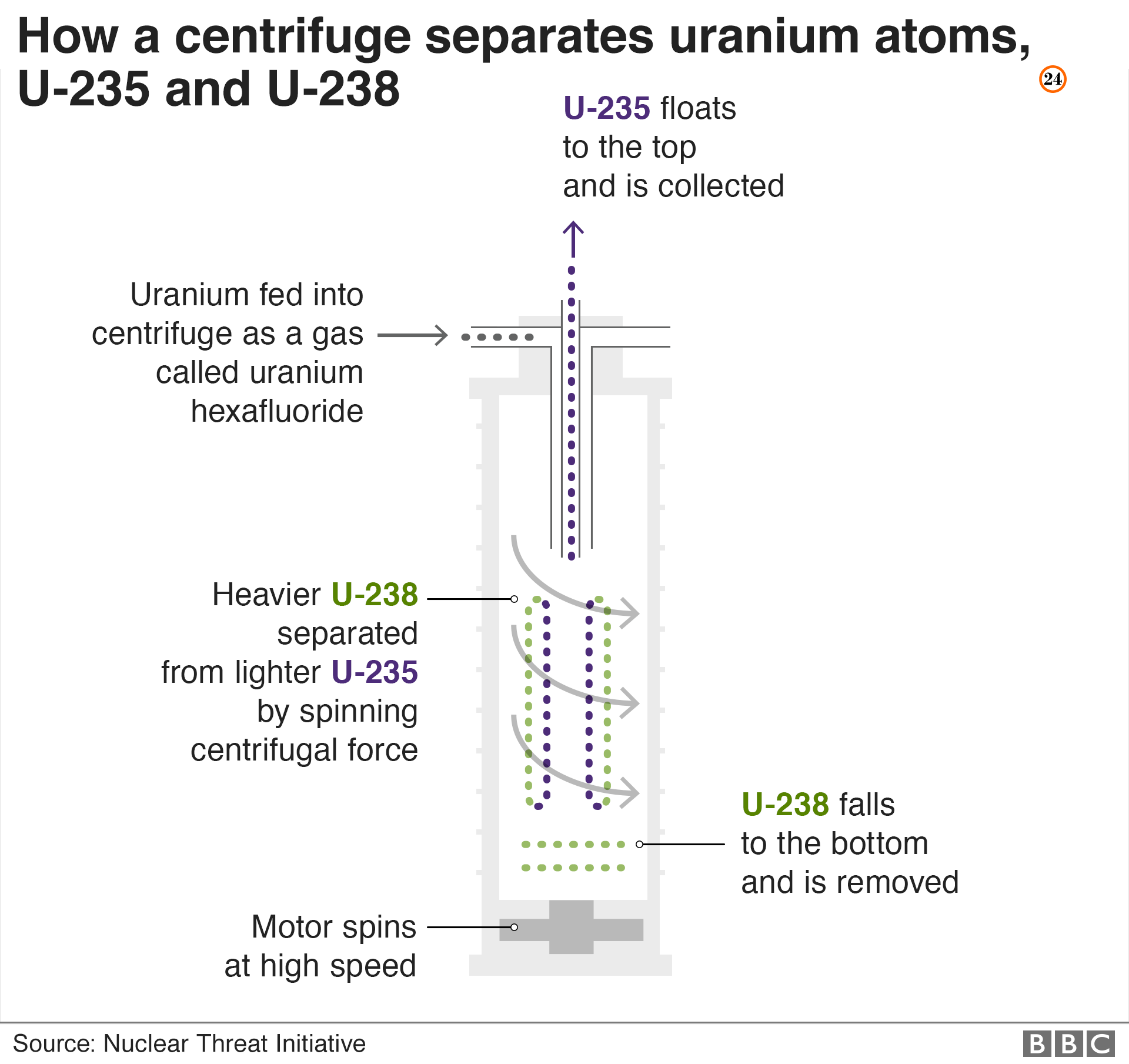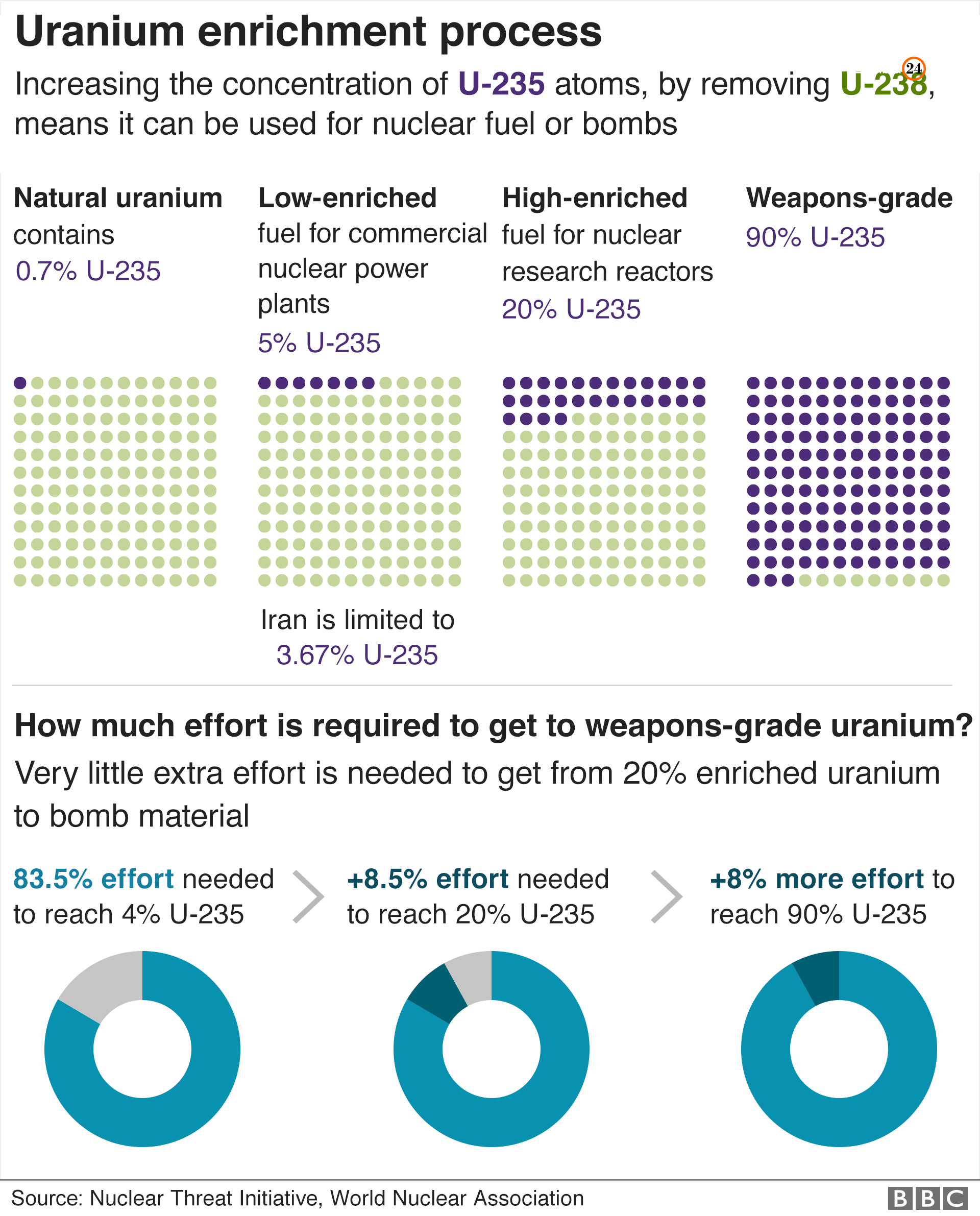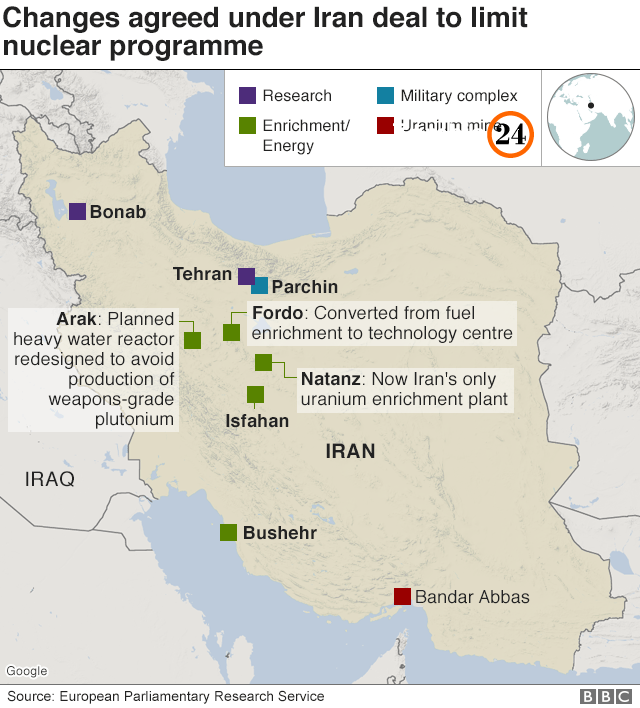Iran ‘resumes enriching uranium to 20% purity at Fordo facility’
BBC-Iran has resumed enriching uranium to 20% purity, in its most significant breach yet of the 2015 nuclear deal.
Government spokesman Ali Rabiei told state media the process had started at the underground Fordo plant near Qom.
Enriched uranium can be used to make reactor fuel but also nuclear bombs. Weapons-grade uranium is 90% purity.
Iran, which insists that its nuclear programme is peaceful, has rolled back a number of key commitments under the deal in retaliation for US sanctions.
Israeli Prime Minister Benjamin Netanyahu said Iran’s decision “can’t be explained in any way except as continued realisation of its intention to develop a military nuclear programmeâ€.
“Israel will not allow Iran to manufacture nuclear weapons,†he added.
Mr Rabiei told Iran’s state news agency Irna that the process of enriching uranium to 20% had started “a couple of hours ago†at Fordo.
President Hassan Rouhani had ordered the move because he was “bound†by a new law requiring the production and storage of at least 120kg (265lbs) of 20%-enriched uranium annually for peaceful purposes, he said.
Iran’s parliament passed the law following the assassination in late November of the country’s top nuclear scientist, Mohsen Fakhrizadeh, which Iranian leaders blamed on Israel.
The International Atomic Energy Agency (IAEA) said its inspectors were monitoring activities at Fordo on Monday and that its director general would file a report to member states.
But the global watchdog said last week that it had been informed by Iran of its plan to enrich to 20%.
What is enriched uranium?
Enriched uranium is produced by feeding uranium hexafluoride gas into centrifuges to separate out the most suitable isotope for nuclear fission, called U-235.
Low-enriched uranium, which typically has a 3-5% purity of U-235, can be used to produce fuel for commercial nuclear power plants.
Highly enriched uranium has a concentration of 20% or more and is used in research reactors.


Under the nuclear deal, Iran was allowed to enrich uranium only up to a 3.67% purity; to stockpile no more than 300kg (660lbs) of the material; to operate no more than 5,060 of its oldest and least efficient centrifuges; and was required to cease enrichment at Fordo altogether.
But Iran has taken steps to “reduce†those commitments since US President Trump abandoned the accord in 2018 and reinstated economic sanctions to compel it to negotiate a replacement.
The steps have included building up the stockpile of low-enriched uranium, producing 4.5%-enriched uranium, restarting advanced centrifuges, and resuming enrichment activities at Fordo.
Iran has stressed that they can be reversed if the US returns to compliance.
Why is 20% purity significant?
Experts at the Arms Control Association said last month that 120kg of uranium enriched to 20% was about half the amount of uranium that, when enriched to weapons-grade (90% or more), was necessary for one bomb.
They also warned that the production of highly enriched uranium would pose a more serious near-term proliferation risk.
That is because going from uranium’s natural state of 0.7% concentration of U-235 to 20% takes about 90% of the total effort required to get to weapons-grade.


Before the nuclear deal, Iran had a sufficient amount of 20% enriched uranium and number of centrifuges that its “break-out time†was estimated to be about two to three months. The agreement slowed the “break-out time†to at least a year.
The resumption of enrichment at Fordo is troubling because the facility is built beneath a mountain and is relatively protected from a military strike.

The post Iran ‘resumes enriching uranium to 20% purity at Fordo facility’ appeared first on .
